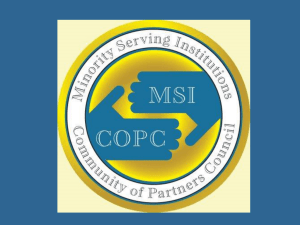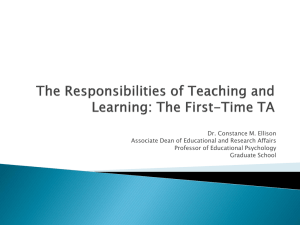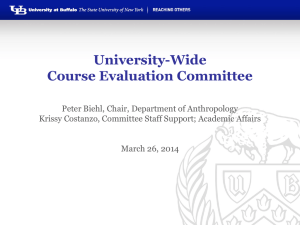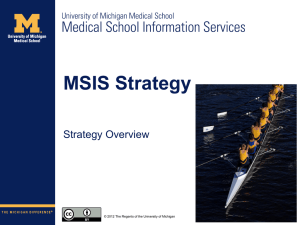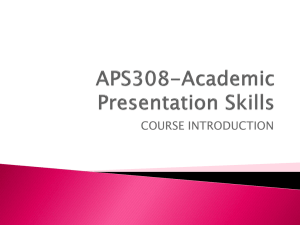Transaction Processing & Enterprise Resource Planning Systems
advertisement
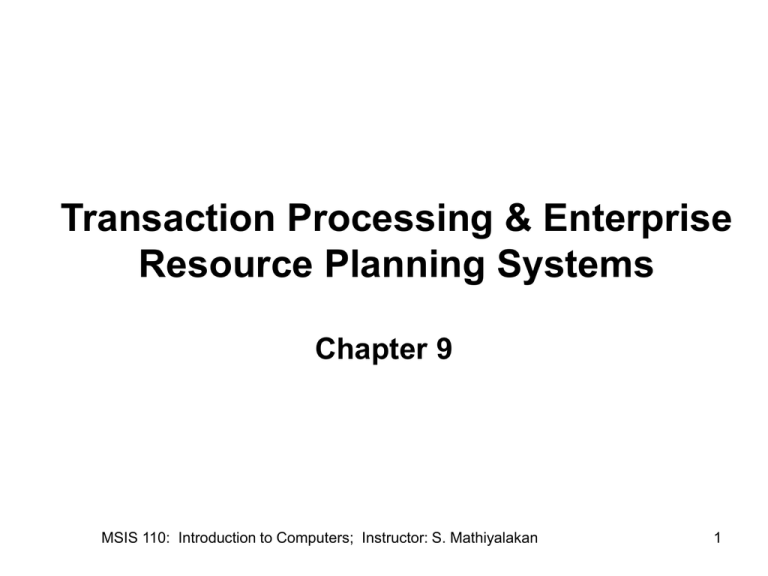
Transaction Processing & Enterprise Resource Planning Systems Chapter 9 MSIS 110: Introduction to Computers; Instructor: S. Mathiyalakan 1 Principles and Learning Objectives • An organization’s TPS must support the routine, dayto-day activities that occur in the normal course of business and help a company add value to its products and services. – Identify the basic activities and business objectives common to all transaction processing systems. – Describe the inputs, processing, and outputs for the transaction processing systems associated with order, purchasing, and accounting business processes. MSIS 110: Introduction to Computers; Instructor: S. Mathiyalakan 2 Principles and Learning Objectives • TPSs help multinational corporations form business links with their business partners, customers, and subsidiaries. – Identify the challenges that multinational corporations must face in planning, building, and operating their TPSs. MSIS 110: Introduction to Computers; Instructor: S. Mathiyalakan 3 Principles and Learning Objectives • Implementation of an enterprise resource planning system enables a company to achieve numerous business benefits through the creation of a highly integrated set of systems. – Define the term enterprise resource planning system and discuss the advantages and disadvantages associated with the implementation of such a system. MSIS 110: Introduction to Computers; Instructor: S. Mathiyalakan 4 An Overview of Transaction Processing Systems MSIS 110: Introduction to Computers; Instructor: S. Mathiyalakan 5 TPS, MIS/DSS, and Special Information Systems MSIS 110: Introduction to Computers; Instructor: S. Mathiyalakan 6 Traditional Transaction Processing Methods & Objectives • • • • • • • Batch processing systems On-line transaction processing (OLTP) On-line entry with delayed processing Process data generated by and about transactions Process data generated for and about transactions Maintain a high degree of accuracy and integrity Produce timely documents & reports MSIS 110: Introduction to Computers; Instructor: S. Mathiyalakan 7 Traditional Transaction Processing Methods & Objectives • • • • Increase labor efficiency Help provide improved service Help build and maintain customer loyalty Achieve competitive advantage MSIS 110: Introduction to Computers; Instructor: S. Mathiyalakan 8 Batch versus On-Line Transaction Processing MSIS 110: Introduction to Computers; Instructor: S. Mathiyalakan 9 Integration of a Firm’s TPSs MSIS 110: Introduction to Computers; Instructor: S. Mathiyalakan 10 Examples of Transaction Processing MSIS 110: Introduction to Computers; Instructor: S. Mathiyalakan 11 Transaction Processing Systems MSIS 110: Introduction to Computers; Instructor: S. Mathiyalakan 12 Transaction Processing Activities • Data collection – Should be collected at source – Should be recorded accurately, in a timely fashion • Data editing • Data correction MSIS 110: Introduction to Computers; Instructor: S. Mathiyalakan 13 Document Production and Reports MSIS 110: Introduction to Computers; Instructor: S. Mathiyalakan 14 Control & Management Issues • Business resumption planning • Disaster recovery – Backups MSIS 110: Introduction to Computers; Instructor: S. Mathiyalakan 15 Transaction Processing Audit • Does the system meet its business requirements? • Are there procedures and controls? • Are the procedures & controls properly used? MSIS 110: Introduction to Computers; Instructor: S. Mathiyalakan 16 Order Processing Systems • • • • • • • • Order entry Sales configuration Shipment planning Shipment execution Invoicing Customer relationship management (CRM) Routing and scheduling Scheduling systems MSIS 110: Introduction to Computers; Instructor: S. Mathiyalakan 17 Document Production Reports MSIS 110: Introduction to Computers; Instructor: S. Mathiyalakan 18 Traditional Transaction Processing Applications MSIS 110: Introduction to Computers; Instructor: S. Mathiyalakan 19 Order Processing Systems MSIS 110: Introduction to Computers; Instructor: S. Mathiyalakan 20 Order Processing Systems MSIS 110: Introduction to Computers; Instructor: S. Mathiyalakan 21 Order Entry System MSIS 110: Introduction to Computers; Instructor: S. Mathiyalakan 22 Shipment Planning MSIS 110: Introduction to Computers; Instructor: S. Mathiyalakan 23 Inventory Status Report MSIS 110: Introduction to Computers; Instructor: S. Mathiyalakan 24 Invoicing MSIS 110: Introduction to Computers; Instructor: S. Mathiyalakan 25 Customer Relationship Management MSIS 110: Introduction to Computers; Instructor: S. Mathiyalakan 26 The 15 Top-Rated CRM Software Packages MSIS 110: Introduction to Computers; Instructor: S. Mathiyalakan 27 Purchasing Systems • • • • Inventory control Purchase order processing Receiving Accounts payable MSIS 110: Introduction to Computers; Instructor: S. Mathiyalakan 28 Purchasing Systems MSIS 110: Introduction to Computers; Instructor: S. Mathiyalakan 29 Accounts Payable MSIS 110: Introduction to Computers; Instructor: S. Mathiyalakan 30 Accounts Payable MSIS 110: Introduction to Computers; Instructor: S. Mathiyalakan 31 Accounting Systems MSIS 110: Introduction to Computers; Instructor: S. Mathiyalakan 32 Accounts Receivable MSIS 110: Introduction to Computers; Instructor: S. Mathiyalakan 33 Accounts Receivable Aging Report MSIS 110: Introduction to Computers; Instructor: S. Mathiyalakan 34 Typical Paycheck Stub MSIS 110: Introduction to Computers; Instructor: S. Mathiyalakan 35 Payroll Journal MSIS 110: Introduction to Computers; Instructor: S. Mathiyalakan 36 General Ledger MSIS 110: Introduction to Computers; Instructor: S. Mathiyalakan 37 General Ledger MSIS 110: Introduction to Computers; Instructor: S. Mathiyalakan 38 ERP Software Vendors MSIS 110: Introduction to Computers; Instructor: S. Mathiyalakan 39 International Issues • • • • Different languages and cultures Disparities in information systems infrastructure Varying laws and custom rules Multiple currencies MSIS 110: Introduction to Computers; Instructor: S. Mathiyalakan 40 Enterprise Resource Planning MSIS 110: Introduction to Computers; Instructor: S. Mathiyalakan 41 Enterprise Resource Planning • Real-time monitoring of business functions • Supports human resources, sales, and distribution • Accommodates the different ways each company runs business MSIS 110: Introduction to Computers; Instructor: S. Mathiyalakan 42 Advantages of ERP • • • • Eliminates costly, inflexible legacy systems Improved technology infrastructure Improved work processes Increased data access for decision making MSIS 110: Introduction to Computers; Instructor: S. Mathiyalakan 43 Disadvantages of ERP • • • • Expense & time Radical change Integrating with other systems One vendor risks MSIS 110: Introduction to Computers; Instructor: S. Mathiyalakan 44 ERP System MSIS 110: Introduction to Computers; Instructor: S. Mathiyalakan 45 Business Application Programming Interface (BAPI) MSIS 110: Introduction to Computers; Instructor: S. Mathiyalakan 46 Summary • Transaction Processing Systems - consist of all components of a CBIS, including databases, telecommunications, and people • Transaction Processing Systems Methods - batch, on-line, and on-line with delayed processing • Enterprise resource planning (ERP) software - a set of integrated programs that manage a company’s vital business operations for an entire multisite, global organization MSIS 110: Introduction to Computers; Instructor: S. Mathiyalakan 47

